QuestionSorry to bother you, but I have serious problems getting a fair answers from the Romanian Vets from Bucharest, so you are the next best thing. Hope you can help.
I have a female guineapig named Baby and for the past 2 weeks she had teary eyes and stopped eating.
After we went to the vet and gave her some antibiotic and vitamin B shots she lost more weight, because she cannot eat all by herself.
Apparently she has something at her lips, where they split, like a tiny discomfort(but big enough not to have her eat by herself) plus something in her mouth...like a fungus caused.
Because of the lack of food and strong lack of vitamins she used to take from food the skin from her soles are coming off(only from the front paws) and redlike blisters appear...they are not with fester or anything, but im sure it hurts...
Her ears are becoming more dry and the edges are the first to change color into dark shades...
I gave you all the simptoms. So far ive been giving her cereals moistured with water and mint tea for the tummy, since she is pooing liquid.
I just dont know how a perfectly healthy guineapig could get so sick so fast... The vets told me that is cause she's old, but u dont get old in so little time...besides..the vets are clueless since the meds they gave us for the mouth burnt it instead of healing...so i dont know anymore.
Please help? at least to have her feel better and maybe to have her eat on her own. She WANTS to eat...but she cant cause of the lips...
Thank you.
Angelica
(Romania, Bucharest)
AnswerAngelica,
I have no idea what is wrong with her lip, it seems to be an oddity. The feet problem and the dry ears is due to lack of vitamins that she needs, so your going to have to feed her a diet that has everything she needs in it by a syringe. Guinea Pigs get sick so fast as they have no immune system due to their inability to absorb vitamin C. I am thinking though that if she is able to get all of her vitamins, minerals and such from her diet through the syringe that it may help in healing up her lips, ears and feet. In the mean time place mineral oil on her ears to soften them again and keep them from drying out any further. And I have a feeling that her feet problem is really Bumblefoot. Here is a few easy ways of treating that to minimize her pain and heal her feet up.
Some owners recommends an anti-septic lotion that contains 2% chlorhexidine gluconate called ResiChlor.
Others recommend treatment for a cavy with severe bumblefoot (swollen to the size of a grape with an open sore) is:
Oral antibiotics until it clears up.
Soaking foot frequently in a chlorhexidine solution.
Covering with NEW SKIN Wound & Blister Dressing (ointments cannot be used with this dressing).
After soaking, let the foot dry while holding her so it stays clean, then cut a patch of the dressing to cover the sore. It adheres well, lets the wound drain and it doesn't hurt when removed.
Note: That some owners have found chlorhexidine soaks to be very drying. Alternating dilute chlorhexidine soaks with dilute Betadine soaks may be easier on your guinea pig's feet. Some people use a product like Preparation H after the foot is dry.
V.C.G. Richardson described a reportedly successful treatment -- injecting antibiotics directly into the affected foot pad (0.2ml [20 mg] lincomycin daily for 5-7 days), an approach which may be useful for a pig with poor circulation.
Those are the most effective and easiest treatments available for bumblefoot.
Your going to have to hand feed her for a time. Until her lips heal up or it is found out what is exactly causing the problem with her lips. I'll give you some tips for her care along with a good way to hand feed her and what foods to use in the hand feeding.
Towels: You may wish to keep your pet on flat folded towels instead of loose bedding, as it is easier to walk on since she isn't feeling well, and you can keep better track of urine and stool output.
Warmth: A few pigs benefit greatly from extra warmth. Some owners recommends Thermacare wraps -- designed to relieve sore muscles, they heat up when exposed to air and stay warm for up to 8 hours. Have used them with orphans and ill cavies. They can be purchased in supermarkets and pharmacies. Some people will use a wrapped water bottle or light (for its radiant warmth) at one end of a cage. Any heat source should be positioned so the cavy can move away from it if uncomfortable.
WEIGH DAILY! While Baby is ill, weigh her once or twice a day. This is especially important if your cavy is not eating, in which case you should be monitoring to see if your hand feeding is able to maintain your pet.
Hand-feeding takes practice and patience by both of you, Try to make it fun and relaxing. Although it is a time consuming process, it will offer you the opportunity to bond more closely to your pet.
Those are some tips to help care for her, now for the feeding part.
Adult guinea pigs eat approximately:
6 grams dry feed/100 grams of body weight
10 to 40 ml water per 100 grams of body weight ( will vary with temperature, humidity, etc.)
Weigh Baby to estimate her dietary needs. A 1 kilo pig (2.2 pounds) might require 60 grams (2 1/10 oz.) dry food and 100 ml (6 2/3 Tablespoons) of water. If you have difficulty determining how much food Baby is consuming, weigh her before and after feeding.
Now that we have how much she needs to eat out of the way, here is what to feed her.
The day's ration of alfalfa pellets and her regular pellets can be crushed in a coffee grinder (or ground with a mortar and pestle) or soaked overnight in a refrigerator and crushed by spoon to make a powder. About 20 grams of powder and 5 mls of water will make a good paste (experiment). A stiffer paste reduces the danger of asphyxiation. Some piggies will appreciate the mash being warmed for a few seconds in the microwave. Pellets work the teeth (especially a drier mash) and stimulate the digestive system more effectively than baby food, though prepared peas, mixed veggies, etc are much smoother than pellets and can be mixed in with the pellets. Some owners combined the product with Pedialyte, Odwalla juice, wheat grass juice, or natural cranberry juice (no added sugar or preservatives) instead of water to improve palatability and nutrition, you may want to try one of those instead of water as she is pooping liquid.
Ok now here is information on the best way to hand feed Baby.
Perhaps 20 to 25grams of mash with 15 ml water on the side will be all you will be able to do at one time. Several (4-6 or more) feeding sessions per day will be necessary, to keep things moving through Baby's system and provide adequate nutrition. A 1 cc. syringe with the restrictive tip cut off (to leave a tube of even diameter) and sanded smooth is useful for feeding. A spare 1 cc needleless syringe can be used to offer water (with vitamin C) in between bites and to administer medications. A straw can be used in a pinch, though it is tedious.
There are many techniques -- most basic is to feed slowly and do not rest your pig on its back ( a greater chance of aspiration). Some people find a vertical position works well. Some people wrap their pet in a little "pouch". Others hold the guinea pig facing away from them. For the truly uncooperative pig. Make sure the pig is swallowing. You do not want to get food into the lungs. A stiffer mix may help prevent aspiration. Stick the syringe into the side of the mouth directly behind the front teeth, and work it down to the back teeth until the pig starts grinding on the end of the syringe. Then ... slowly depress the syringe contents into the mouth, stopping if the pig stops chewing. As long as there is chewing motion - the pig is swallowing. A little wiggle of the syringe will often get the chewing motion to start up again if it's stopped.
Most pigs feel more secure when they have their feet on a hard surface. Place your pig on a towel on the counter, corralled in the crook of your arm. Experiment with gently holding your pet's chin. You can be firm if necessary.
Your goal is to get Baby back to a normal eating routine, so offer food occasionally while you are hand-feeding and make sure there is food always available in their living quarters. As there may be a time when her lips heal and she'll want to eat on her own, better to be prepared then not to be. Some people find their ill cavy responds enthusiastically to grass. If you have fresh, clean, pesticide-free grass available, be sure to offer it to your pet. Avoid areas next to busy roadsides or those frequented by dogs or livestock.
Other then all of that there isn't any more I can offer for advice, as it is an oddity for a Guinea Pig to have problems with their lips. It isn't one of the normal problems owners have with their Guinea Pigs.
I hope this helps and that Baby starts feeling better soon.
Take care,
Jules

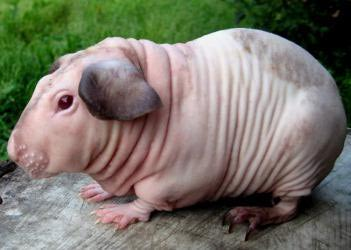 Guinea Pig Genes?
QuestionI have a male Dalmatian guinea pig, and I have
Guinea Pig Genes?
QuestionI have a male Dalmatian guinea pig, and I have
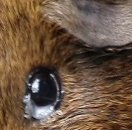 Guinea pig has milky eye and crust
QuestionHelp me!!! I have two guinea pigs, just o
Guinea pig has milky eye and crust
QuestionHelp me!!! I have two guinea pigs, just o
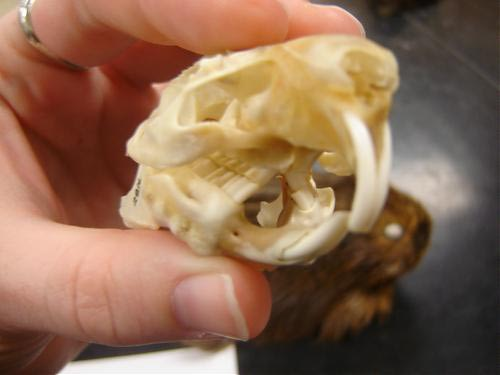 guinea pig not up to par
QuestionMy little girl suddenly isnt eating like she us
guinea pig not up to par
QuestionMy little girl suddenly isnt eating like she us
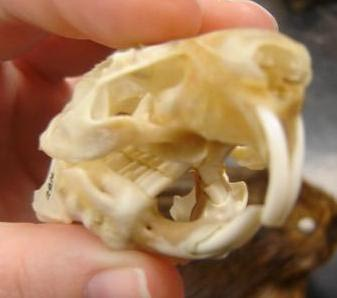 Guinea pig sneezing blood?!
QuestionI have a female guinea pig that I recently adop
Guinea pig sneezing blood?!
QuestionI have a female guinea pig that I recently adop
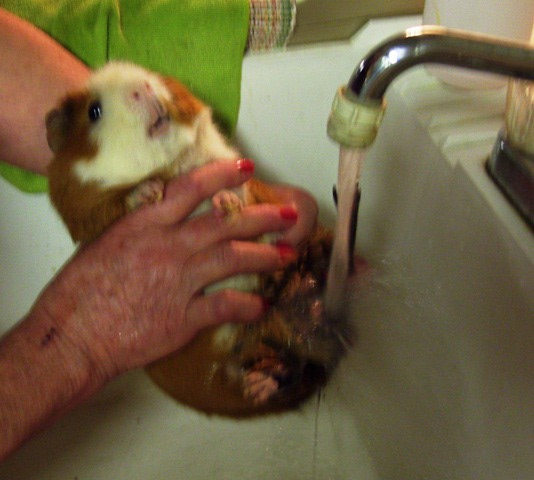 guinea pig feces
QuestionQUESTION: my male guinea pig seems to be poopin
guinea pig feces
QuestionQUESTION: my male guinea pig seems to be poopin